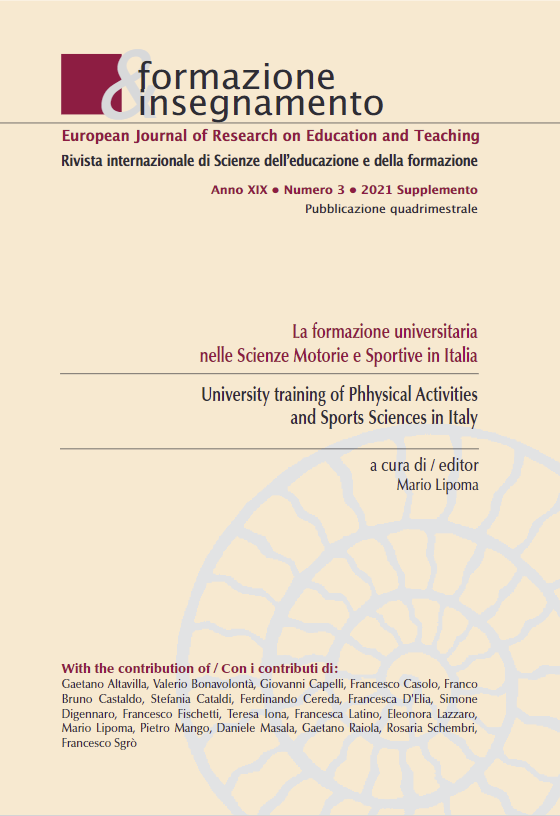Performance analysis: applications and possible future in physical activity and sports sciences
DOI:
https://doi.org/10.7346/-feis-XIX-03-21_07Abstract
The acquisition of data to acquire knowledge has ancient origins. The purpose of this article is to retrace the main stages, starting from the Aristotelian philosophic view, passing through Galen and Leonardo, until Bernstein and Reep’s studies to arrive at the present-day possibility of defining Performance Analysis (PA) as a methodology for an objective detection of data which allows us to accurately and precisely explain the dynamic and historical evolution of a phenomenon. The field of application of PA is connected to the study of the individual, group or team performance, including Paralympics. Furthermore, it involves the personal and environmental variables of employees and working teams, both in the free professional and the business field. Recently, it has also been applied to study the behavior in the educational and adaptive field and in the area of health in order to define observation standards of the patients for prevention and rehabilitation. The question is: is it possible to apply an exact science, though the result of a careful planning, to the above-mentioned activities, or are they the result of intangible and non-calculable factors? Presently, it is clear that if we observe a qualitative phenomenon, even a very complex one, when using an accurate and precise observation methodology, it is possible to obtain objective data, provided that the observer is very specifically skilled. Focusing our attention on sport and motor activities, we can ascertain that a new professional cate-gory of specialists, called performance analysts, is emerging. New occupational spaces will open in the fields of younger and third age motor activities, and in sports, Paralympic sports and also in didactics and formation.
Downloads
Published
How to Cite
Issue
Section
License
Copyright (c) 2022 Pensa MultiMedia

This work is licensed under a Creative Commons Attribution 4.0 International License.
Formazione & insegnamento is distributed under Attribution 4.0 International (CC BY 4.0).
For further details, please refer to our Repository & Archiving Policy, as well as our Copyright & Licensing Terms.





